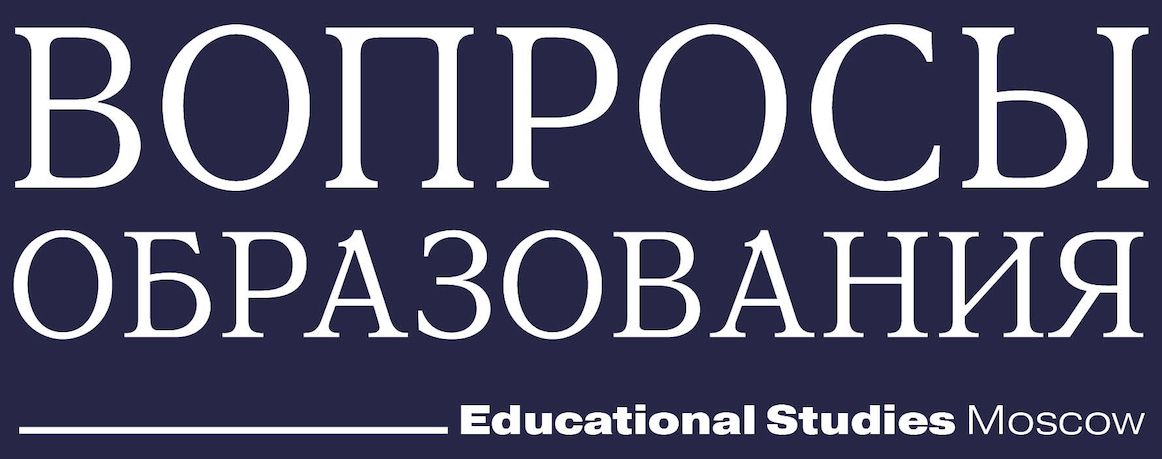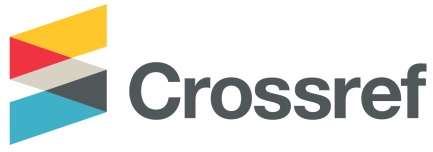Forthcoming
-
Обучение как игра: как отношение подростков к использованию игровых механик связано с мотивацией и образовательными результатами (2025-03-25)
Проведено исследование с целью изучения взаимосвязи отношения подростков к использованию игровых механик в образовательном процессе с их учебной мотивацией и метапредметными образовательными результатами, включая критическое мышление, креативность, коммуникацию, кооперацию (4К) и цифровую грамотность. В исследовании приняли участие 312 подростков в возрасте 13–15 лет из 10 регионов России, обучающихся в центрах цифрового образования IT-куб. Для оценки восприятия игровых механик, мотивации и навыков использовались опросники, а также интерактивные тесты 4К и DigLit.
Результаты показывают, что частое использование игровых механик, таких как «задания и квесты» и «система поощрений», положительно коррелирует с внутренней мотивацией учащихся и их вовлеченностью в учебный процесс. В то же время механики, особенно включающие элементы соревновательности, могут вызывать тревожность у хорошо успевающих учащихся. Частота применения игровых механик слабо положительно связана с внутренней мотивацией и не оказывает эффекта на уровни цифровой грамотности и навыки 4К. Гендерные различия проявились в большей тревожности девушек по отношению к использованию игровых механик, при отсутствии различий в увлеченности учебным процессом.
Авторы подчеркивают необходимость адаптации игровых механик под образовательные цели, индивидуальные особенности учащихся и их мотивационные профили.
-
Вовлеченность учащихся в изучение программирования: использование мобильных игр в дополнительном образовании (2025-12-01)
Вовлеченность подростков в изучение STEM-дисциплин и ее связь с контекстуальными факторами исследуются на примере дополнительных занятий в кружках и активности в мобильной игре, направленных на обучение навыкам программирования. Установлено, что вовлеченность учащихся в изучение STEM-дисциплин офлайн положительно коррелирует с онлайн-вовлеченностью, измеренной через активность в мобильной игре. При этом вовлеченность учащихся в мобильной игре показала значимую связь с поведенческим и эмоциональным, но не с когнитивным компонентом вовлеченности. Значимым контекстуальным фактором вовлеченности как в кружковых занятиях, так и в контексте мобильной игры оказалось восприятие учащимися предложенных заданий как интересных. При этом общение со сверстниками показало значимую связь с вовлеченностью в условиях кружков, но не в формате однопользовательской мобильной игры. На основании этих данных авторы делают вывод о создании новых коллаборативных сценариев прохождения мобильных игр как перспективном направлении развития дополнительного образования.
Проведенное исследование дополняет теоретические представления о вовлеченности в обучение в контексте дополнительного образования. Полученные результаты приобретают особую актуальность в условиях текущих инициатив по привлечению детей и подростков к изучению STEM-дисциплин и стимулированию их интереса к науке и технологиям и могут способствовать разработке более эффективных стратегий и программ в области STEM-образования.
-
На пути к преодолению неравенства: портрет и опыт студентов первого поколения в России (2025-11-26)
В контексте массовизации высшего образования студенты первого поколения (те, чьи родители не имеют высшего образования) сталкиваются с особыми барьерами на пути к получению высшего образования из-за своих специфических запросов, опыта и карьерных ожиданий. Это делает их одной из групп риска с точки зрения образовательной успешности, что актуализирует проведение исследований, которые помогут лучше понять специфику этой группы студентов. Цель данной статьи заключалась в определении типичного портрета российских студентов первого поколения, анализе их стратегий поступления в вузы, а также особенностей их образовательного опыта. В качестве эмпирической основы для исследования использовались данные опроса студентов российских вузов, собранные в рамках проекта «Мониторинг экономики образования» (N = 9969). Согласно полученным результатам, вопреки зарубежным исследованиям, российские студенты первого поколения не отличаются от студентов, у родителей которых есть высшее образование по большинству рассматриваемых характеристик. Хотя различия в специфике поступления и образовательном опыте студентов статистически значимы, их нельзя назвать существенными в силу малого размера эффекта. Это можно объяснить спецификой российского контекста, связанной с доминированием представлений о высшем образовании как социальной норме и высоким уровнем доступности бесплатного высшего образования, а также стандартизированной моделью приема, которая может нивелировать первичные эффекты неравенства. Вместе с тем, отдельного внимания в последующих исследованиях заслуживает дифференцированный анализ траекторий, установок и образовательного опыта студентов первого поколения, обучающихся в селективных и неселективных университетах. Это позволит дать более детальную картину в отношении не просто обобщенных показателей доступности высшего образования для традиционно недопредставленных социальных групп, но и возможных ограничениях доступности наиболее качественного сегмента высшего образования для этих групп.
-
Не только в школе: распространенность и специфика буллинга в дополнительном образовании (2025-12-01)
Предпринята одна из первых в российской науке об образовании попыток оценить распространенность буллинга в детских коллективах дополнительного образования и выявить его специфику. Выборку составили учащиеся 17 крупных организаций дополнительного образования в одном из российских мегаполисов — 2969 респондентов в возрасте от 8 до 15 лет. В качестве контрольных переменных для модели, предсказывающей уровень распространенности буллинга, использовался ряд социально-демографических показателей респондентов, а также характеристики организаций дополнительного образования. Результаты исследования подтвердили обе выдвинутые авторами гипотезы. Установлено, что показатели распространенности буллинга в детских коллективах кружков и секций близки к тем, которые фиксируются в школе, — 30%. В большей степени выражены вербальный и социальный типы буллинга, меньше — физический. Распространенность буллинга выше в коллективах, в которых от детей ожидают высоких образовательных результатов.
-
Прием на магистерские программы по педагогике: международный опыт (2025-12-01)
Задача обеспечения образовательного суверенитета страны и потребность в конкурентоспособных магистерских программах обусловливают необходимость пересмотра процедур набора в отечественную магистратуру. Особого внимания требует прием на педагогические специальности, поскольку они относятся к числу самых массовых и подготовка педагогов ключевым образом влияет на качество образования в стране. Одним из источников идей для трансформации вступительных испытаний может послужить международный опыт. В статье представлен комплексный анализ практик приема абитуриентов на магистерские программы по педагогике в ведущих зарубежных вузах — лидерах предметного рейтинга QS "Education & Training". Выявлены и охарактеризованы 11 требований к поступающим на магистерские программы по педагогике, которые разделены на три группы: общие, частые и редкие. Формальные характеристики требований оценивались с помощью контент-анализа программ, содержательные — с помощью индуктивного тематического анализа. Сформулированы пять критериев оценки абитуриентов, поступающих на магистерские программы по педагогике: академический, мотивационный, коммуникативный, профессиональный и мировоззренческий. Установлено, что в зарубежных практиках отбора в магистратуру по педагогике наиболее значимыми являются первые три критерия и прослеживается тенденция к повышению роли мировоззренческого критерия, в то время как в российских вузах продолжает превалировать оценка предметных и педагогических знаний поступающих.
-
Обучение науке о данных в англоязычной магистратуре стран БРИКС (2025-12-01)
Проведено исследование англоязычных магистерских программ по науке о данных, реализуемых в странах БРИКС. Проанализированы характеристики 75 программ: их названия, специализация, форма, формат и продолжительность обучения, тип присуждаемой степени, стоимость обучения, содержание учебного плана, профессии выпускников, статус учебного заведения, предлагающего программу. В качестве методов исследования данных применены описательный и корреляционный анализ, непараметрические статистические тесты и кластеризация. Установлено, что в названиях магистерских программ чаще всего присутствуют термины «данные», «аналитика», «бизнес» и «наука», значительная доля программ действует в университетах и предполагает присуждение степени магистра наук, превалирует очная форма обучения в аудитории, самая распространенная длительность программ — два года. Обнаружены статистически значимые различия в стоимости обучения между странами и между программами с разной длительностью обучения. Кластерный анализ выявил четыре группы магистерских программ со схожими характеристиками: 1) дорогостоящие программы, реализуемые в университетах с невысоким рейтингом, присуждающие степень магистра наук; 2) самые дорогостоящие программы, преимущественно предлагаемые учебными заведениями, которые не имеют статуса университета, присуждающие степень магистра наук, значительная доля этих программ специализируется на определенной предметной области; 3) программы с самой низкой стоимостью обучения, действующие в высокорейтинговых университетах, весомая доля этих программ специализируется на той или иной предметной области или на конкретном методе работы с данными; 4) программы с низкой стоимостью обучения, реализуемые преимущественно в университетах с невысоким рейтингом и специализированные в значительной своей части на предметной области.
-
Нарративы родителей-россиян о вовлеченности, барьерах и агентах вовлечения детей в занятия физкультурой и спортом: анализ фокус-групп (2025-12-01)
В статье проанализированы нарративы родителей детей в возрасте от 3 до 12 лет, в которых раскрываются их представления о вовлеченности детей в дополнительные систематические спортивные занятия и физическую активность, о барьерах, препятствующих таким занятиям, и агентах вовлечения детей в занятия физкультурой и спортом (ФКиС). Источником эмпирического материала послужили четыре фокус-группы, в которых участвовали 36 родителей в возрасте от 27 до 50 лет, проживающих в Москве, Санкт-Петербурге и Тамбове (13 отцов и 23 матери). Обработанные при помощи тематического анализа материалы сопоставляются с данными зарубежных исследований и обсуждаются с точки зрения их соответствия концепциям вовлеченности детей в физическую активность, производным от разных социологических теорий. На основании родительских оценок выделены три группы детей: не вовлеченные в систематические дополнительные занятия ФКиС, слабо вовлеченные и сильно вовлеченные. Вовлечению детей младшего возраста в систематические дополнительные занятия ФКиС могут препятствовать как субъективные, так и объективные барьеры, и среди них нет универсальных, т. е. тех, на которые указали бы все родители. Основным агентом вовлечения детей в занятия ФКиС родители считают семью. Наиболее релевантными полученным результатам авторы считают экзистенциальные подходы в социологии. Нарративы российских родителей оказались в целом сходными с теми, которые анализируются в зарубежных исследованиях, между ними выявлено лишь одно существенное различие: объясняя низкую вовлеченность своего ребенка в занятия ФКиС, российские родители часто апеллируют к слишком раннему для занятий спортом возрасту ребенка. Таким образом, существенных отличий российских родителей от зарубежных в их рационализации детской вовлеченности в занятия ФКиС не обнаружено.
-
Профессиональное образование в биографиях молодежи: нарративы самозанятых и работников в найме (2025-12-01)
Представлен анализ материалов глубинных интервью с 29 самозанятыми и 37 работающими по найму в возрасте от 18 до 35 лет. Гайдинтервью включал вопросы о протекании процесса взросления, о том, какое влияние на этот процесс оказало получение профессионального образования, о выборе профессии и вуза, об образовательном опыте и выстраивании образовательной траектории, о смыслах получения образования и его значении для самоэффективности человека.
Полученные материалы обрабатывались посредством совмещенияметодов биографического анализа и открытого кодирования. Результаты исследования подтверждают растущую непредсказуемость карьерных траекторий молодежи. При этом нарративы о месте и смысле профессионального образования в жизни молодых работников существенно различаются в группах самозанятых и работающих по найму. Для биографий самозанятой молодежи характерно переживание разочарования как этап построения карьерной траектории. Такого этапа не отмечается в биографиях специалистов, работающих по найму, им свойственноотношение к периоду обучения как к фону для более значимой в этот период деятельности. Самозанятая молодежь более самостоятельна в выборе специальности и вуза, а работающие по найму чаще выбирают традиционные для их семей профессии. Работники обеих категорийпродолжают обучение после получения высшего образования, но для самозанятых его источником становится автодидактика, а для работающих по найму — место работы. Что касается смыслов образования, самозанятые указывают на значимость обретения профессиональных навыков, в то время как работающие по найму понимают под образованием получение пропуска во взрослую жизнь, в том числе благодаря усилению уверенностив себе в результате «инициации» профессиональным образованием.
-
Валидизация Единого национального тестирования в Казахстане: доказательная основа справедливого оценивания (2025-12-01)
Во всем мире к вступительным экзаменам в вузы, как к экзаменам с высокими ставками, предъявляются серьезные требования: они должны быть максимально объективными, надежными и справедливыми. Это означает, что процесс их разработки, проведения и оценки должен быть тщательно контролируемым и стандартизированным, чтобы исключить любую возможность предвзятости. В Казахстане прием в вузы осуществляется по результатам государственного вступительного экзамена — Единого национального тестирования (ЕНТ).
Проведено исследование с целью оценки валидности результатов Единого национального тестирования в Казахстане на примере математики.Основное внимание уделено двум блокам свидетельств валидности: на основе внутренней структуры теста и на основе связи результатов тестирования с другими переменными, в частности с критериями последующей успешности студентов на этапе получения высшего образования. Теоретической рамкой исследования послужила теориявалидности С. Мессика. Серия валидизационных исследований проводилась согласно методологическим требованиям объединенных Стандартов образовательного и психологического тестирования American Educational Research Association, American Psychological Association и National Council on Measurement in Education с использованием подходов классической теории тестирования, современной теории тестирования, а также статистического анализа, включая иерархическое линейное моделирование. Полученные результаты свидетельствуют о том, что экзамен ЕНТ по математике обладает высоким психометрическим качеством. При этом общий балл ЕНТ по пяти предметам и отдельно балл ЕНТ по математике позволяют надежно прогнозировать будущую успешность обучения студентов в вузе. Установлено, что качество использованных статистических моделей и объясняемая ими дисперсияоценок студентов за первый семестр во многом согласуются с результатами исследований, проведенных в других странах, включая Россию и США.







